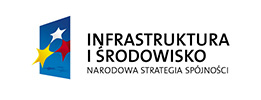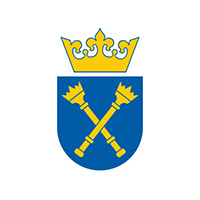Jagiellonian Digital Library contains 884 067 digital objects
Jagiellonian Digital Library – “the little sister” of Jagiellonian Library
2016-05-12The history of Jagiellonian Digital Library – a platform for sharing collections - started in 2010, owing to obtaining a bailout from the European Regional Development Fund in frames of the Operational Programme Infrastructure and Environment 2007-2013, Priority XI “Culture and cultural heritage” Action 11.1 “Protection and preservation of the cultural supra-regional heritage”. Project named “Jagiellonian Digital Library” had been implemented during 2010-2013 when had been digitalized and shared 1222 volumes of periodicals (i.a. 235 vol. of “Lviv Newspaper”/„Gazeta Lwowska” dated 1811-1939, “Stenographic reports from Galician Sejm”/„Sprawozdania Stenograficzne z Sejmu Galicyjskiego” dated 1861-1918, 225 vol) and 1644 books and special collections units (manuscripts, old prints, music collections, graphic and cartographic collections, rare publications and social life documents).
Digitalization process consists of several stages - from selecting a library resource, by scanning, graphic processing of files, OCR process, providing with metadata to publishing of digital objects on the JDL platform in the respective collections and archiving raw scans and other forms of protection of library materials – which were presented in the collective work edited by Krystyna Sanetra, published in 2013, entitled: Uniwersytet Jagielloński - Biblioteka Jagiellońska - Jagiellońska Biblioteka Cyfrowa : www.jbc.bj.uj.edu.pl.
Described in this book strategy of digitalization, assumptions, procedures and practical solutions in the majority part are still valid and used in the daily work of the Jagiellonian Library. The only significant change concerns the presentation format of digital objects. Initially for the presentation of digital objects was selected format DjVu (advanced method of image segmentation). Usability of DjVu format has been proved in practice, and it was used until 2014. However, the popular web browsers did not support DjVu format, which was the cause of inconveniences to the readers, such as not displaying the object and the necessity to install additional plug-ins. Accordingly, it was decided to chose the PDF format for presentation of the digital object because of its universality and versatility (every popular browser has a built-in PDF plug-in that allows to view PDF files on the Internet without the need of user’s intervention) and then was replaced by a PDF.
Goals of the “Jagiellonian Digital Library” had been continued in the next project entitled “Safe and comprehensive sharing of JU digital resources in the Internet- stage I” co-funded from Malopolska Regional Operational Programme 2007-2013, in which digitalization was applied to not only JU collections threatened with destruction, but also periodicals from resources of Library of Law Faculty and periodicals and 1 200 titles of music prints of Polish composers from the nineteenth and the first half of the twentieth century, published in Poland and abroad kept safe in the Library and the Audio Library of the Institute of Musicology, to cover the needs of all units of the Jagiellonian University. The digitized material included such magazines as: “Kiev Daily”/„Dziennik Kijowski” (years 1906-1918), “Kraków Newspaper”/„Gazeta Krakowska” (years 1794, 1796-1849), published in Lviv “Morning Newspaper”/„Gazeta Poranna” and “Evening Newspaper”/„Gazeta Wieczorna” (years 1910 / 1911-1930), “Official Regulations for the Capital King City of Cracow”/„Dziennik Rozporządzeń dla Stołecznego Królewskiego Miasta Krakowa” (years 1880-1933).
Among complementary actions aiming at development of Jagiellonian Digital Library was implementation of projects subsidized by the Ministry of Culture and National Heritage for 2015 Programme: “Digitization of the National Collection in JL” - stage I (2013) and stage II (2015).
The collection of the first stage consists of 308 journals (383 vol. containing 300 the-only-one in Poland titles), including 5 titles (73 vol.) threatened with the total degradation “Narodna Casopis”, “ABC.Daily: informs all about everything”/„ABC.Pismo codzienne: informuje wszystkich o wszystkim”, “People's Daily“/„Dziennik Ludowy”, “Political Weekly of Warsaw Newspaper”/„Tygodnik Polityczny Gazety Warszawskiej”, “Political Weekly of Warsaw National Journal”/ „Tygodnik Polityczny Warszawskiego Dziennika Narodowego” and 353 units of special collections (140 manuscripts, 140 old prints, 36 iconographic documents, 37 music documentaries).
Collection of second stage is composed of 48 titles of Polish old print periodicals from seventeenth and eighteenth centuries (161 volumes), 52 titles of foreign, old print magazines from seventeenth and eighteenth centuries published in Polish territory (in 223 volumes) and 68 Polish titles of books of the eighteenth century (77 volumes) from the collections of the Jagiellonian Library among others: „Monitor”, “Historical and Political Diary”/„Pamiętnik Polityczny y Historyczny”, “Journal of patriotic politicians”/„Dziennik Patryotycznych Polityków”, “Warsaw Newspaper”/„Gazeta Warszawska”, “Silesia Newspapers”/„Gazety Śląskie”. Among Polish non-serial publications from eighteenth century, are included following titles: “Political Thoughts about Civil Liberty”/„Mysli Polityczne O Wolnosci Cywilney” of Józef Wybicki, “Thoughts about Kings, succession, past and prospective government”/ „Mysli O Krolach, o Sukcessyi, o przeszłym i przyszłym Rządzie” of Wojciech Turski, “Luteran History”/„Historya Luterska” of Jan Poszakowski.
Jagiellonian Library, due to the need to develop ways of preservation of cultural and scientific library resources, undertakes actions to adapt to modern methods of collections’ sharing and actively augments collections from its own funds. New positions are successively processed and published - a number of digital resources in November of 2013 amounted 245 132 publications and currently (May 2016) amounts 310 386 which comprises to 2 TB of shared material. This number consists of publications in following categories: magazines/periodicals (which are the most numerous and constitutes 92% of digital collection), old print periodicals, manuscripts, rare books, musical items (music manuscripts, autographs of composers etc.), Iconography (paintings, drawings, graphics, bookplates etc.), Cartography (maps and atlases) and Social Life Documents (posters, obituaries, placards, postcards, leaflets, theater programs etc.). Since the beginning of 2016 to April the average monthly number of visitors was 322 199.and the total number of visits since the birth of the "younger sister" of the Jagiellonian Library (19 July 2010) to 10 May 2016 expanded to 20 052 871.
Other news
-
2024-03-08
-
2023-11-30
-
2023-11-30
-
2023-10-10
-
2023-09-15
-
2023-09-15
-
2023-06-13
-
2023-06-13
-
2021-10-07
-
2019-03-01
-
2017-12-06
-
2017-12-06



